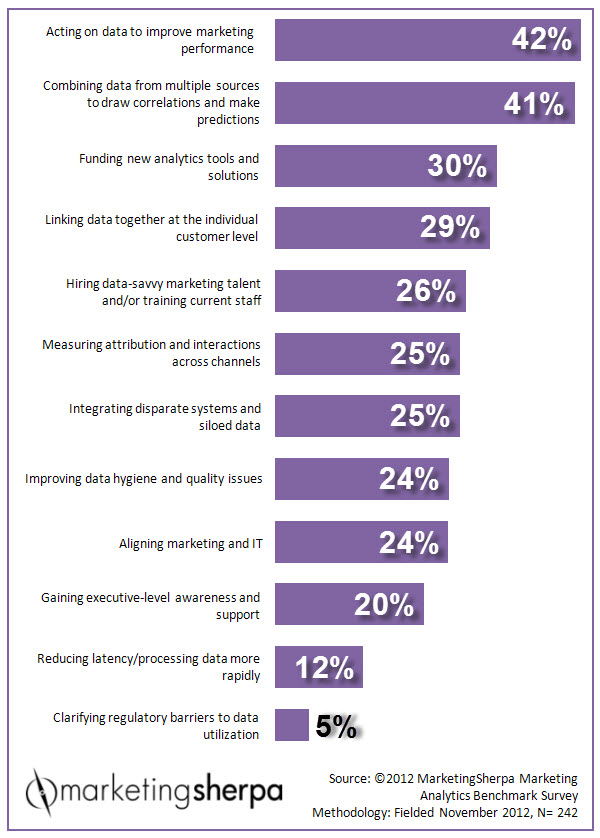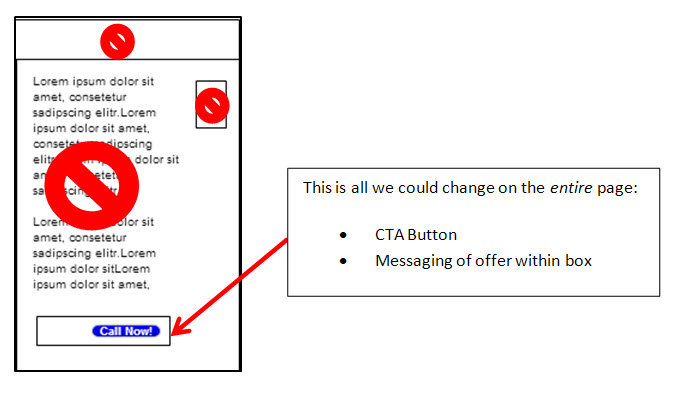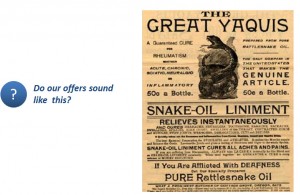Last November, we published a how-to article in the MarketingSherpa B2B Newsletter titled, “CRM How-to: Tactics on Marketing/IT alignment, database strategy and integrating social media data.” As you might guess from the title, the article covered a range of customer relationship marketing concepts. To get the insights presented in the piece, I spoke with six industry experts.
With all of this great information at hand, I faced a common “problem” that crops up when researching multi-source MarketingSherpa articles – after writing a thorough how-to article, I still had a huge amount of great material that just didn’t make it into the piece. The solution? Offer those insights in a couple of additional blog posts.
Here on the MarketingSherpa Blog, we published, “Defining CRM: Thoughts from three experts,” a deeper look into how different industry experts actually define the term “customer relationship management” (and a fascinating group of opinions that might change the way you think of CRM), and another on the B2B Lead Blog, “Sales and Marketing: The technology behind CRM.”
Today, I’d like to offer more insights into CRM, and also add another industry expert to the entire mix, Lou Guercia, President and CEO, Scribe Software, a data integration and migration software company.
4 doors into the company
One key distinction covered in the post on defining customer relationship management was between CRM as simply a technology piece of software that might be as narrowly defined as the software utilized by Sales, or CRM technology embracing marketing automation and email technology as well, compared against CRM as a holistic customer lifetime experience that takes into account marketing activity, sales actions and customer service.
Even though he is coming from a very data-centric perspective, Lou said he sees CRM from the customer lifetime perspective.
He explained the four touch points, or “doors,” for customers interacting with your company:
- Marketing
- Sales
- Support (customer service)
- Finance
“What can we do to do support customers better?” Lou asked. “Think through what would be the data requirements and the workflows that would allow our business to service those customers through those four doors to the company in a way that would make those customers happy and more likely to continue to use our product or service.”
In the list of “doors,” I found it very interesting Lou added finance. Customer service is often mentioned in the holistic view of CRM, but from a customer touch point perspective, and maybe even more importantly from customer data perspective, how that person interacts with the finance department is a very important piece of the customer lifecycle.
The largest section of the original how-to article we published was on the database, and whether companies should keep separate databases for Marketing and Sales.
The opinion was mixed, with one expert, Brian Vellmure, Founder, Initium LLC/Innovantage International, splitting the difference suggesting one, or two, databases should be determined on a case-by-case basis, even though he did suggest there needed to be some way to merge all data for the ability to perform end-to-end data analysis.
Lou said a CRM implementation strategy should include integrating the Marketing and Sales databases if those are not already in sync, but the next stage would be to integrate the accounting and financial data into that overarching database as well.
With this total insight into the individual customer, if a database record changes for any reason at any point in the customer lifecycle – as a database prospect, after the handoff to Sales as a qualified lead, or at the account level post-conversion to a customer – the database everyone is using contains the correct information.
This means Marketing and Sales continuing efforts in up-selling, cross-selling and ongoing brand awareness understand, and can react to, changes in that customer’s status – maybe their phone number, job title or possibly even company changed over time.
The cloud and big data
As a marketer you might be thinking, “Oh man, first I have to get aligned with Sales and get all of us playing in the same data sandbox, and now I have to think about adding Finance to the mix?”
Lou suggested any CRM implementation strategy should be handled incrementally, and there’s no need to “boil the ocean” and try to do everything at once. At the same time, there needs to be an overall plan for the implementation.
He said, “If you think it through from a process level:
- What are we trying to do?
- What can we improve on?
- What feedback have we heard from these customers?
- How can improve the way we work with those customers and prospects?
- What are the data elements that we are going to need to do that and then have an actionable, prioritized plan?”
The implementation should be based on an overarching plan, and he said to avoid being so tactical that urgent problems get fixed without a framework in place for the entire process.
From a data perspective, one relatively new technological solution is out there.
“One factor that is impacting the market for adopting this kind of strategy is the rampant growth of cloud services,” Lou said.
He added the cloud provides the ability to link data from sources ranging from sales and marketing automation technology, call center systems and even accounting and finance.
Lou said one school of thought regarding another hot term right now – big data – is the idea of “give me every bleeping piece of data under the sun, and I will have smart algorithms that will figure out where to get some patterns.”
“I think that’s great for IBM,” he explained. “What I am about is relevant data sets. What are the types of data that you would want that can be reasonably well parsed through and used by organizations.”
He added big data is about finding patterns in unstructured data that will be helpful to the business, and marketers probably know what data they want for better access into customer insights. The challenge is managing big data in a coordinated way.
“Maybe I am not about ‘big data’ in the classic sense, but more [about] relevant use of bigger data, not vast data,” Lou explained.
Brian Vellmure, the advocate of allowing corporate culture to determine the database strategy, provided another perspective on actually handling big data for marketers:
Big data will allow us to obviously understand our customers better.
If we can understand who they are, who they are interacting with, where they go, what they are interested in beyond our products and service offering, and what their normal day in a life is, then obviously, we have a potential to bring them the right message at the right time.
It is not intrusive. It is not annoying, and it also allows us to find patterns that we didn’t even know to look for before.
Read more…
















